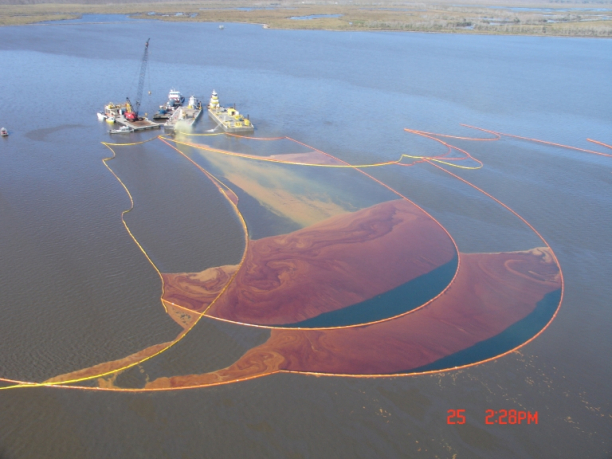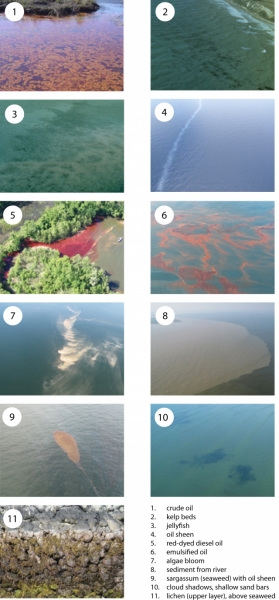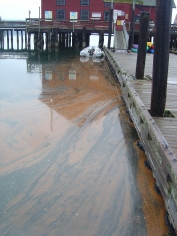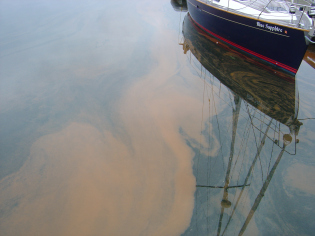
Crude oils can range in color, from black to red to yellow.
When most people picture oil spills, they often think of a heavy continuous coating of oil on the sea or shoreline, and that may be a fair depiction, but after a few hours or days the oil can become patchy, become mixed with water, and change in color and consistency.
Even close to the source of the spill the colors can be quite variable depending on the thickness of the oil. Check out this spill I worked on a few years ago in Louisiana. A well is leaking and spraying yellowish oil, which is caught in a floating boom. As the oil collects in the boom it gets thicker and becomes orange. The thickest oil is black.
There are a lot of phenomena that may be mistaken for oil. Algae blooms, for example, can confuse even trained observers. I took these photos a couple summers ago at a marina near Seattle. This is naturally occurring algae but it looks a lot like reddish brown oil.
Here are photos showing different kinds of oil and some photos of things commonly confused with oil. How many did you get right? Let me know. If you are interested in more information, go to http://oceanservice.noaa.gov/facts/oil-algae.html.



